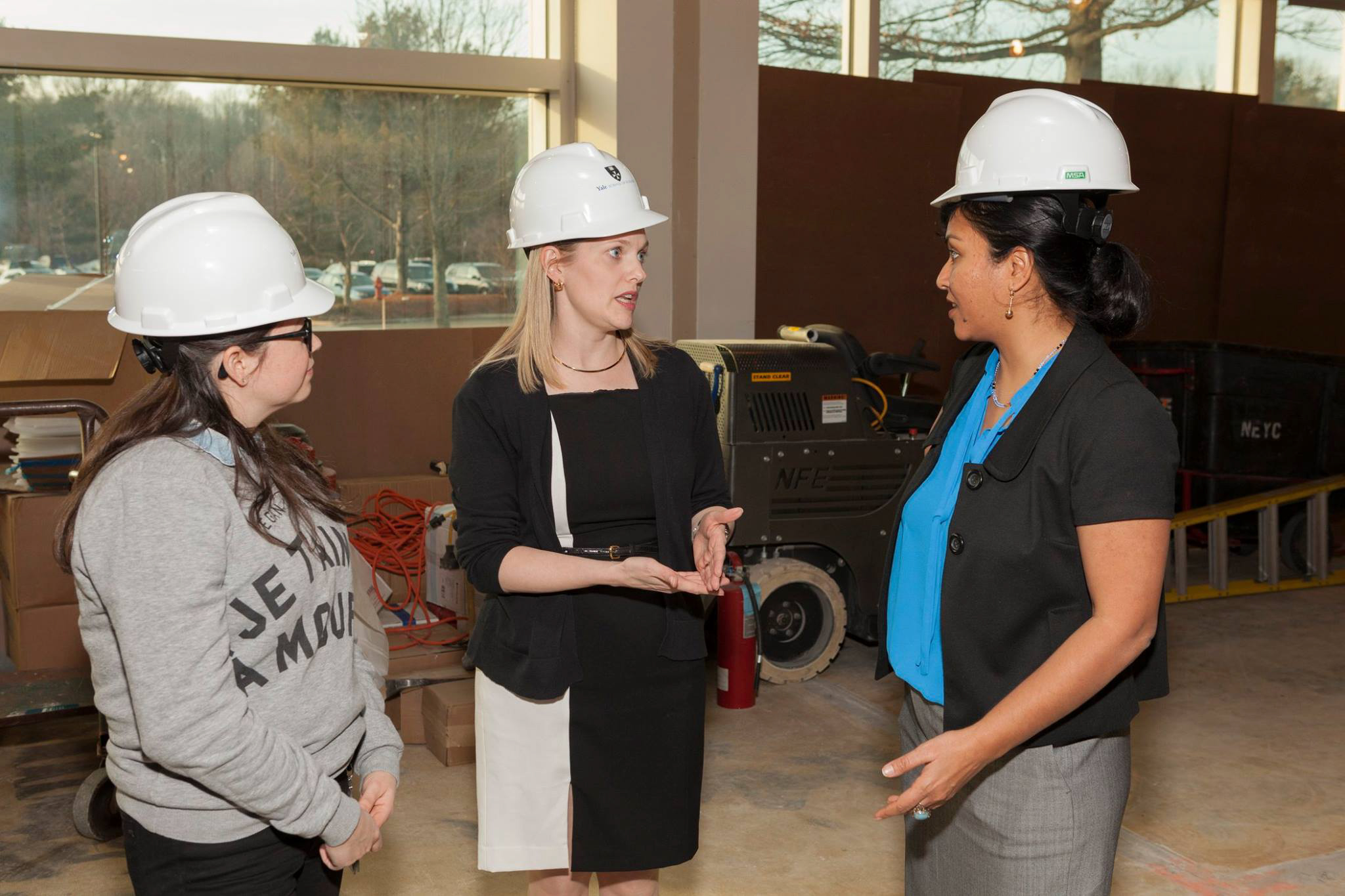
Harold Shapiro
The Yale School of Nursing recently kicked off the renovation and expansion of its Simulation Lab, a training ground for nursing students hoping to gain practice with real-life scenarios.
Since the School of Nursing made the move to West Campus in 2013, administrators have deliberated over how to best use the new, larger space. Two years ago, the School of Nursing decided to convert a large unused space at West Campus into a state-of-the-art Simulation Lab, similar to the one housed at the School of Medicine. Now, the team has broken ground on this ambitious project, currently on track to be completed in time for the start of the fall 2018 semester.
“I think one of the most important things about this project is that [students] get to experience practicing with context,” said Marcia Thomas, associate dean of finance and administration at the School of Nursing. “They can experience working with someone, let’s say in a home-care setting with cockroaches running around. It’s a way to learn what you can’t get out of a textbook.”
The School of Nursing’s simulation program was established in 2008, said Simulation Lab Director Ginger Sherrick. Simulated health problems range from cardiac arrest to injuries sustained in the aftermath of a tornado, Thomas said.
The renovations will include six new standardized patient rooms that emulate facilities in real clinical practices. These rooms will have viewing windows for professors and students to watch and evaluate the simulations. Many of the simulations are also captured on video, so that students can review their own performances and learn to adjust, Thomas said. Renovations will also include a new simulation lab dedicated to primary care, new classrooms and an updated cafe.
While some nursing students plan to work in acute patient care facilities, which provide immediate and emergency care, a large number go on to work in primary care facilities or patients’ homes, said Ami Marshall NUR ’04, a professor at the School of Nursing. Since the lab already conducts simulations for acute care scenarios, the new additions will help those students make better use of the Simulation Lab in ways tailored to their education.
The renovation project began after administrators noticed the increase in the number of requests from faculty members to incorporate the Simulation Lab into their curricula, Sherrick said.
“All of [the School of Nursing’s seven programs] have very unique needs, and what we currently have couldn’t really match that.”
The Simulation Lab team has worked with faculty members to help them better understand the technology and get feedback about how to put it to better use. As the lab’s potential benefits for students have become clear, faculty members have become more receptive to the project overall, Marshall said.
“I don’t feel like we have too many sticklers here who are completely opposed to change,” Marshall said. “I don’t think anyone is totally married to the idea of lecturing all the time.”
The simulations use a combination of animatronic mannequins and human actors to bring to life scenarios nurses may encounter. The Simulation Lab’s mannequins reflect many of the human body’s functions and are capable of crying, bleeding and urinating. The Simulation Lab’s value lies in the realistic nature of its simulations, Marshall said.
For example, he continued, if a student encountered a patient who was abusing opioids while out in the field with an instructor, the instructor would likely take the lead. Marshall and Sherrick designed a simulation around that exact scenario — only without the instructor — allowing students to gain valuable exposure to a challenging real-world scenario without any of the risks, Sherrick said.
Students have had different clinical experiences, Sherrick said, and the lab serves as a way to level the playing field so that all students will graduate knowing how to handle a number of crises. After each simulation, students go through a debriefing process, reviewing what went well and what could have gone better, she added.
The kickoff celebration for the new lab took place on Feb. 13.
Maya Chandra | maya.chandra@yale.edu







